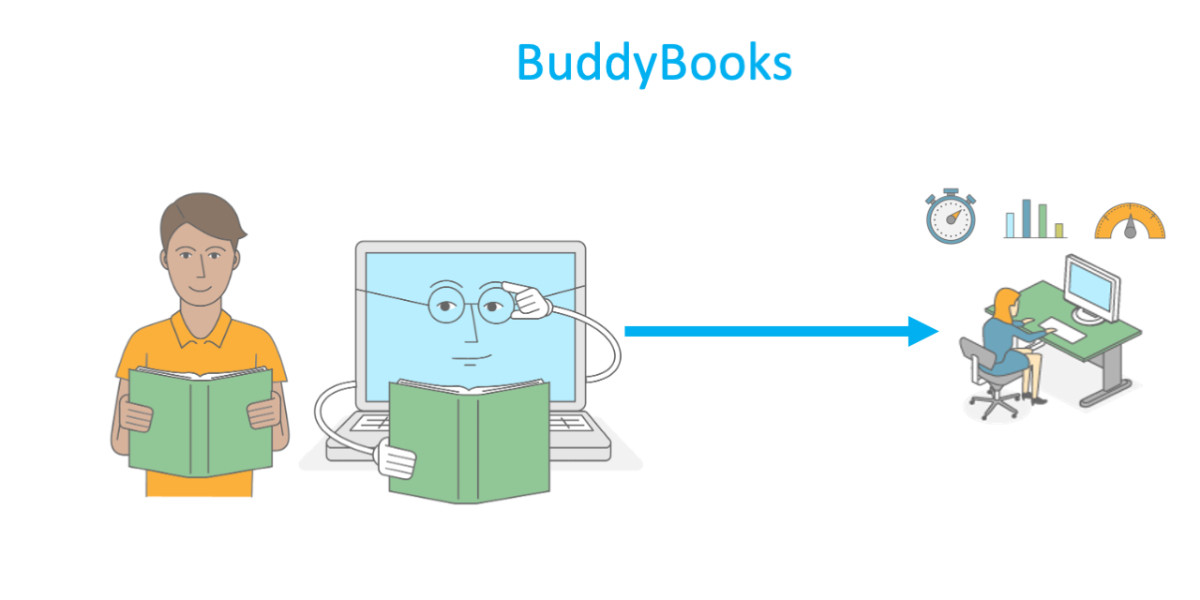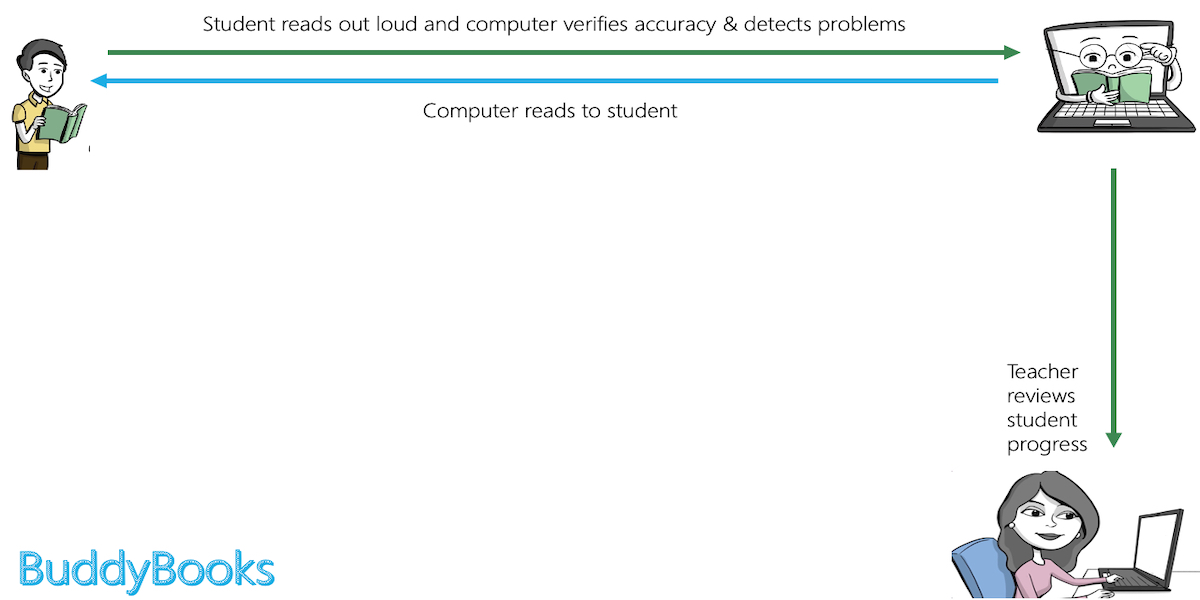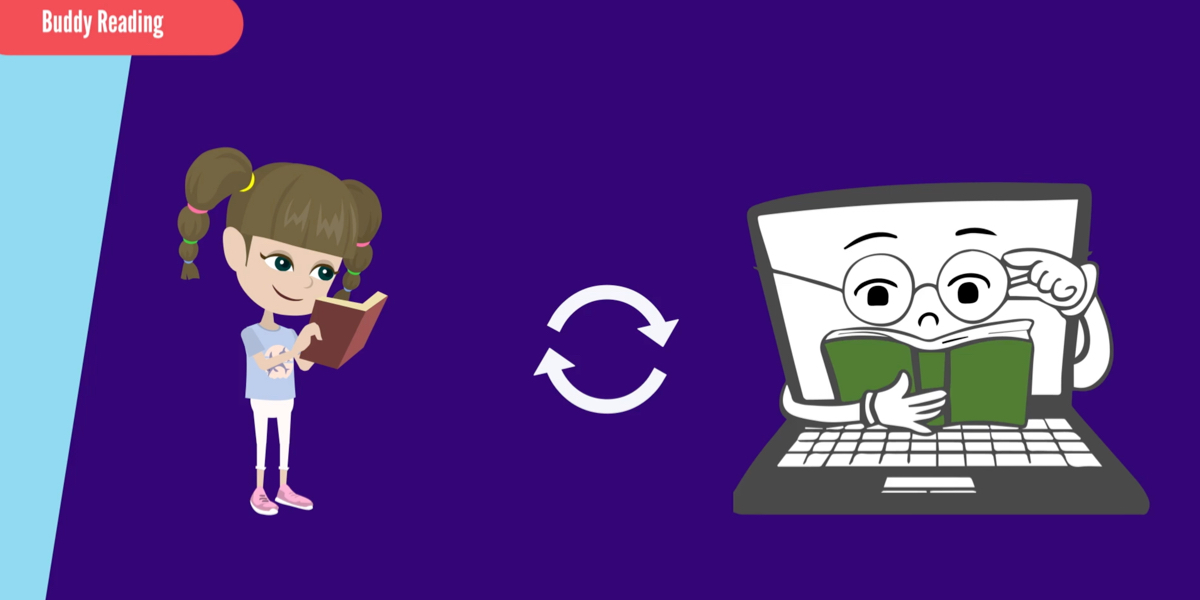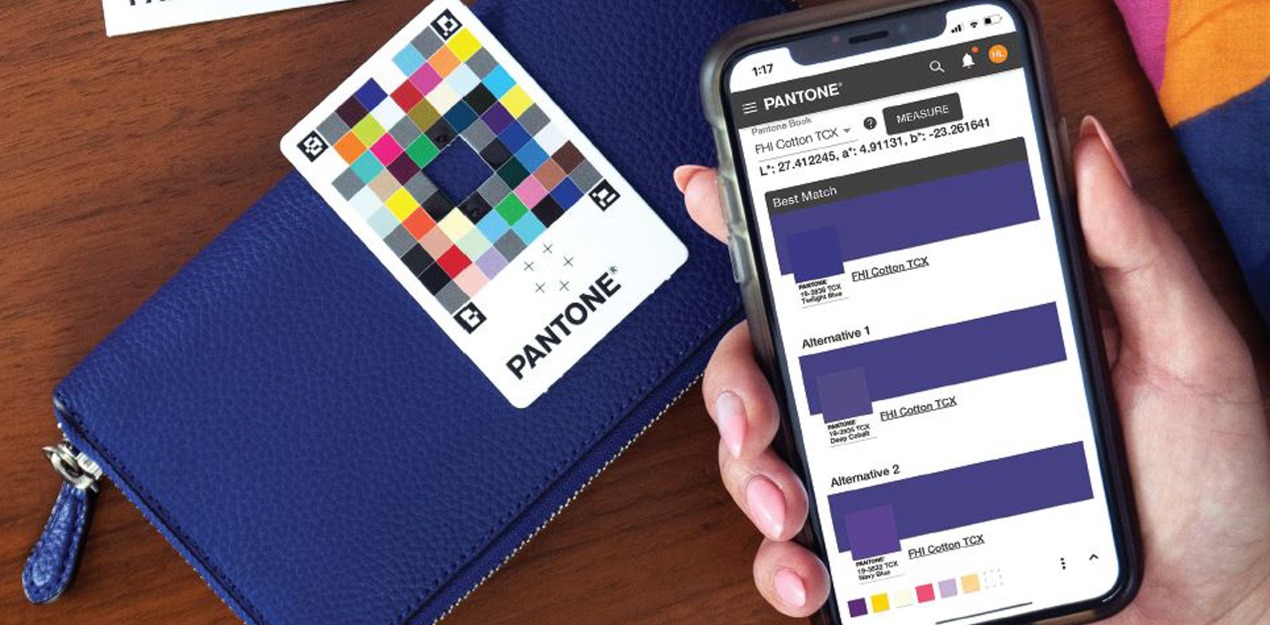AÑO
2023
CATEGORÍA
Aprendizaje y Juego
OBJETIVOS
Educación de calidad
PAL. CLAVE
reading, artificial intelligence, Dyslexia, vision impairment
PAÍS
United States of America
CRÉDITOS
ObjectiveEd Team (Luke,August,Bob,Marty,Jason)
LINK
https://objectiveEd.com
BuddyBooks
A computer and a student buddy-read popular books while it analyzes the student’s oral reading.
How does it work?
The computer and student alternate reading each sentence in a book.
Using advanced speech recognition, the computer verifies the student has read each sentence correctly. When BuddyBooks detects a mistake, it doesn’t interrupt the flow of the story. Instead, the following day, prior to beginning the reading session, BuddyBooks shows the student their mistake, and uses two research-based remediation methods to help the student improve.
BuddyBooks provides teachers with oral reading assessment, so they teacher can quickly target their reading instruction based on the student’s needs. The assessment includes how well the student was reading, how long, and recordings of sentences where students struggled.
Students configure BuddyBooks to match their individual needs, such as reading speed, or font size or colors. That also makes BuddyBooks ideal for students with low vision, where they need the words on the screen to be very large.
Why is it needed?
It’s common knowledge that the more a student reads, the better they’ll do in school, and be more successful in employment. Even reading 15 minutes a day can make a big difference.
Students with dyslexia or other reading impairments need to practice reading but are often bored and not engaged. Often, reading improvement tools provided by a school are not fun.
BuddyBooks works with books that students enjoy reading (over 1 million book titles), so finding a book that captures a student’s interest Is easy. It’s just like reading with a parent, or a buddy, where you alternate reading sentences. It’s engaging and fun.
How does it improve life?
While BuddyBooks will help all struggling readers in the future, we’re currently focusing on students with reading impairments like dyslexia – roughly 3.5 percent of all students. And it will be available in many languages besides English.
Giving students a chance to improve their reading skills, where they are engaged because they book aligns with their interests, and they share the reading “burden” with the computer, can help millions of students who might otherwise never improve. It can even help students who don’t feel confident reading in front of classmates. These students can practice and improve their oral reading with a non-judgmental computer until they build sufficient confidence in their reading skills.





